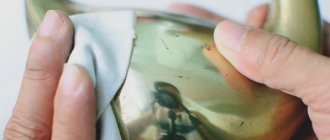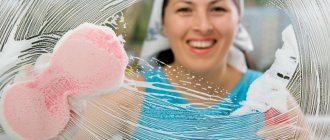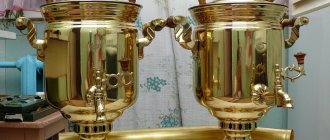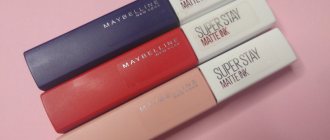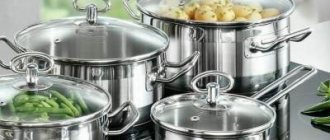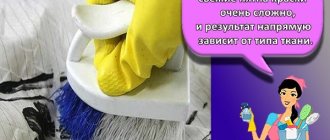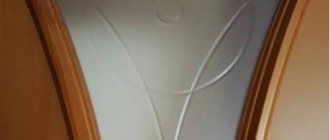Brass products can be found in almost every home. In this article we will talk about how and with what to clean brass at home quickly and effectively. Brass items have long gained popularity due to their unique properties - high strength, attractive color and luxurious shine.
Did you know that the first samovars were made of brass? This metal is still a popular material for making kitchen utensils today.
A LITTLE ABOUT BRASS
Brass is an alloy of copper and zinc. It is the percentage of the latter that is the determining factor in the presence of certain properties and qualities. The average level of zinc presence is considered to be from 20 to 45%.
As a material, brass is different:
- Ease of processing under pressure;
- Good indicators of anti-corrosion resistance;
- Increasing ductility at low temperatures, while strength does not decrease;
- Increased fragility when exposed to temperatures from 200 to 600 degrees;
- Good anti-friction properties;
- Good ability to weld with other metals.
Brass is one of the most popular alloys both in production and in everyday life. In this regard, questions about caring for alloy objects and how to clean brass and how to clean brass at home . By the way, if you are interested in the manufacture of reinforcement frames, you can read here: https://plazmetal.ru/armaturnye-karkasy.html.
Cleaning brass plumbing fixtures
When choosing water taps and mixers, any sales consultant will advise you to take a product made of alloy.
Brass parts are durable, wear-resistant, do not rust, and do not deteriorate from impurities contained in water.
The brass faucet body is beautiful even without nickel plating. However, due to constant contact with water, it begins to become covered with sloppy dark spots. To slow down the process, the faucet should be wiped with a damp cloth after each use. If the stains cannot be removed, first moisten the rag in a hot soapy solution, and finally wipe the mixer dry.
The brass parts of the faucet are not subject to corrosion, but over time they become covered with lime salts, which interfere with the normal operation of the plumbing. After disassembling the mixer, they are kept in an acid solution, washed and returned back.
PREPARATION FOR CLEANING BRASS
Before you begin cleaning brass, the material must be prepared. Preparation for cleaning brass at home consists of the following activities:
- Determining whether an alloy belongs to brass. Namely, whether the material is pure brass or has impurities. To do this, they usually use a magnet, which attracts the brass;
- The feasibility and safety of the upcoming brass cleaning is assessed. It is usually not recommended to clean antiques yourself due to the risk of damaging the patina layer that performs a protective function;
- Immediately before starting the process of cleaning brass, the product is immersed in a soap solution for 20-30 minutes. After completion of the exposure, large contaminants are removed using a medium-hard brush;
- Products that have a paint coating are washed with soapy water and wiped with a soft cloth;
- Areas with serious (complex) contamination are treated with products that do not contain abrasives;
- The use of acetic and hydrochloric acids is justified only in exceptional cases, due to the risk of damage to the alloy surface;
- Washing dishes made of brass is highly undesirable due to the risk of loss of aesthetic appeal.
Most often, to clean brass at home, they use folk remedies that are available in every home and are always at hand.
Precautionary measures
When carrying out the work in question, it is recommended to pay attention to several recommendations. Let's call the main ones:
- A waterproof film is placed in the treatment area.
- When working you need to use special clothing.
- It is recommended to carry out cleaning with gloves. This is due not only to the fact that the substance can have a negative effect on the skin, but nails can cause scratches.
- It is necessary to carefully study the scope of application of the chosen product, whether it is recommended to use it in a particular case.
- It is recommended that before starting work, you determine what substances are included in the alloy. If the brass contains impurities, the cleaning procedure may be slightly different.
Experts do not recommend cleaning old items. Restoration should be carried out exclusively by a professional, since if a mistake is made, the surface may be damaged.
HOW TO CLEAN BRASS AT HOME WITH OXALIC ACID
Acid is used both for cleaning brass from oxide, and for the usual processing of things that have lost their aesthetics. In domestic conditions, oxalic acid is most often found as one of the components of complex care products for decorative items and other accessories.
Treatment of brass with oxalic acid concentrate:
- Wear personal protective equipment (goggles, gloves, apron);
- In a container of sufficient volume, the acid is diluted at the rate of 25 grams of the substance per 1 liter of water;
- The surface of the product is treated with a soft sponge soaked in the solution;
- The applied composition is left on the surface for 15 minutes;
- After completion of the aging period, the brass product is thoroughly washed in a soap solution at 30-40 degrees.
To remove significant oxide deposits, you can use the acid in its pure form without diluting it in water. In this case, the time the acid remains on the surface should not exceed 5 minutes. It is worth considering that it is better not to subject antique products to such treatment due to the excessive aggressiveness of the product.
Cleaning brass with a mixture of acid and soda:
- Technical oxalic acid is applied to the surface to be treated. Contact time is approximately 5 minutes. At this stage the surface darkens, which is a natural reaction;
- Using a medium-hard brush, apply a small amount of soda to the surface. The composition is left for 5 minutes. Particular attention is paid to areas with the most pronounced oxide stains;
- The product is cleaned with a brush and washed under running water.
Professional acid-based brass cleaning products.
Metalin. A liquid containing up to 20% hydrochloric acid and a significant admixture of inhibitors that create a protective anti-corrosion layer. To improve results, you can use Metalin cotton wool.
The composition of Metalin cotton wool includes:
- Olex-2 paste. Bronze Cleaner. A strongly acidic paste-like product that has powerful antioxidant properties due to the creation of a film on the surface. The paste cleans well almost any stubborn dirt, even stubborn dirt. Before use, shake the container with paste thoroughly. The composition is applied to the surface of the alloy and left on it for a period of 5 to 10 minutes. After removing the paste, the product is polished.
- Pasta "Ideal". It is another fairly popular acid-containing brass cleaner.
You can prepare a composition similar in components for cleaning brass at home:
- Melt a mixture of cerisin and wax in a metal container;
- Oleic acid, white spirit and carboxymethylcellulose pre-soaked in water are introduced into the resulting mixture;
- The mixture is heated to 70-75 degrees, stirring constantly;
- Without stopping stirring, triethanolamine, OP-7 and turpentine are added;
- Heating continues for 10 minutes;
- Pumice powder is mixed in small portions;
- The composition is left for 10-15 minutes with constant stirring;
- When the temperature reaches 35-40 degrees, the mixture is poured into a container with a tight-fitting lid.
Taking into account a number of nuances that must be observed during the process and some of its labor intensity, for the most part consumers prefer ready-made pasta. Ideal paste is suitable for treating metal surfaces, including those with an enamel coating, from any type of contamination. It is worth considering that this paste is not recommended for cleaning food utensils.
Basic rules for caring for brass products
By following these simple recommendations, you can maintain the shine of brass items and avoid serious contamination:
- If the product is often used at home, try to maintain constant cleanliness . Regularly wipe things with a damp cloth or rinse them under running water.
- After washing, it is better not to leave items to dry naturally. This can cause unsightly cloudy spots to appear on the surface of the metal. Be sure to wipe the products dry with any material, preferably with a natural composition.
- Try not to touch metal with dirty, greasy hands . Fingerprints may not be immediately noticeable, but if you do not adhere to this rule, in the future the marks may become more obvious and will be much more difficult to clean.
- If you wear brass jewelry, we recommend storing it in a closed box and occasionally wiping it with a soft cloth such as velvet or suede. a special cloth for silver objects , which can be easily purchased at a jewelry store, is ideal for cleaning and polishing
- , ammonia-based compounds or other aggressive agents for cleaning
- Caring for a brass chandelier is also easy. Remove dust regularly with a clean, dry cloth. For more intense contamination, wipe the brass elements of the chandelier with soapy water. At the end of the procedure, do not forget to wipe the product dry.
- Brass door handles are the most susceptible to stains. Street dust, dirty hands - all this negatively affects the appearance of the product. In order to avoid heavy contamination and make it easier to care for the metal, it is recommended to coat the surface of the handles with a special varnish . Please note that over time, the varnish may begin to wear off - do not allow this to happen, check regularly and, if necessary, renew the coating layer.
If you follow these rules and inspect your products regularly, you can avoid most problems. If contamination does appear, we recommend the best methods for cleaning brass.
A brass chandelier will be a wonderful element of both modern and vintage interiors. Clean your artificial sun regularly and enjoy its dazzling shine
HOW TO CLEAN BRASS AT HOME WITH ACETONE
It is used both in pure form and as part of nail polish removers. In the question: “ how and with what to clean brass at home ” it is ideal for cleaning both uncoated surfaces and previously painted ones.
Treatment of brass with acetone is carried out in several stages:
- The product is wiped with a clean swab;
- Using a swab, acetone is applied to the surface;
- If there is significant contamination, the process adds additional steps in the form of 3-4 hours of boiling the alloy in a solution of water, salt and vinegar.
It must be taken into account that acetone is an aggressive agent and requires protective equipment (goggles, gloves).
What to do if there is no result?
If, after cleaning with improvised materials, the result does not live up to expectations, then you can remove the coating and reapply the brass. The procedure is carried out taking into account the following recommendations:
- To begin with, prepare the place where the work will be carried out. To do this, the base is covered with film.
- The surface layer is removed using a special liquid. It is worth considering that such liquids can be easily flammable.
- The second step is to polish the brass. To do this, a special polish must be used, which is rubbed into the surface. Polishing can be carried out after cleaning using various materials.
- After this, the surface is varnished. The substance should be applied evenly; a brush or cotton swabs can be used for this.
After completing the previous operation, the surface is wiped with almost any cloth. In order to eliminate the possibility of fingerprints appearing on the surface, work should be carried out with cotton gloves. By infrequently wiping the surface and removing dust, you can eliminate the possibility of rapid plaque formation.
In conclusion, we note that each case is unique in its own way. That is why you need to carefully select the most suitable cleaning method.
For example, products with complex shapes are often treated with a brush; in some cases, the use of acid is prohibited, as it can damage the brass.
CITRIC ACID AND SALT
In this case, lemon juice (ready concentrate) is mixed with table salt in the amount of 1-2 tablespoons and the resulting mixture is rubbed on the surface of the brass. When cleaning brass at home in this manner, care must be taken as the acid can deteriorate the condition of the surface if it comes into excessive contact. Table salt can be replaced with washing powder.
What is brass and where is it used?
Brass is an alloy of copper and zinc. The material contains elements such as manganese, tin, aluminum and lead particles, which change the characteristics and color shades of the metal. Zinc was discovered in the 16th century, but brass was discovered in ancient times. The metal was obtained by melting copper and zinc-containing ore.
When making the alloy, up to 30% zinc is added to the composition, but to improve technical characteristics, up to 50% metal is added. Brass practically does not wear out and is used in the manufacture of automotive spare parts, serpentine elements, heating radiators, as well as stamped parts and various accessories. Alloy brass is used for the production of aircraft, ships, watch parts and main pipes.
Using tombak (an alloy with a zinc content of no more than 10%) insignia is made. To protect elements from corrosion, cast brass is used. It is used to manufacture bearings, shut-off valves, and separators. Thanks to the properties of the alloy, compasses and heating radiators are produced. Cleaning of brass is carried out without the use of additional equipment and special products.
The metal is used in jewelry in the manufacture of costume jewelry, as well as counterfeit gold jewelry. The alloy content of up to 15% zinc and the addition of 5% aluminum allows you to obtain a material similar to precious. This condition is used when making frames for icons, as well as other items in churches.
HOW TO CLEAN BRASS FROM OLD VARNISH
how to clean brass at home from oxide and other household contaminants were discussed above . However, an important question is: how to clean brass from old varnish at home and how to restore the protective coating.
Removing old varnish from brass products:
- Prepare your workplace. To do this, you need to cover the workspace with oilcloth;
- The old varnish coating is removed with nail polish remover, which is evenly applied to the surface using a soft brush. The procedure is carried out wearing protective equipment and taking into account its flammability;
- After removing the varnish, the surface is thoroughly polished using specialized pastes and polishes.
The prepared product is coated with a fresh layer of varnish. Brushes and cotton pads are used for this. It is necessary to ensure that the varnish is distributed evenly over the entire surface and does not form smudges or unpainted areas. In addition, you should avoid contact of your fingers with a wet surface to avoid fingerprints getting stuck. After applying the varnish, the product is dried and polished.
Removing varnish
In some cases, damage to the varnish causes the material underneath to become darker and lose its color. It is removed in a variety of ways, the choice is made depending on the characteristics of the alloy. You can remove the topcoat as follows:
- The varnish is removed with hot water. When the surface is exposed to high temperatures, the metal begins to expand; after cooling, the varnish comes off.
- The product to be treated can be placed in boiling water, but for no more than 3 minutes.
- If home methods do not help with removing varnish, it is recommended to purchase special solvents. They are found on sale in special stores.
- If the varnish layer is too thick, remove it with an abrasive material. The movement should be made in one direction and without strong pressure. This recommendation is due to the fact that too much mechanical stress can lead to deep scratches.
After removing the varnish, the brass is cleaned of plaque and dirt. For this, various special means and folk methods can be used.
RESULT: HOW AND WHAT TO CLEAN BRASS AT HOME
Having considered all the options and methods for cleaning brass products, we can conclude that the most appropriate is to use professional products made taking into account all the nuances of such surfaces. If the alloy needs to be cleaned, and nothing other than “folk remedies” is at hand, the best results can be expected from aggressive, acidic environments. They must be used carefully, following all the rules and not too often. Products containing abrasives are used extremely rarely and carefully to avoid scratches.
Cleaning decorative items and dishes
Objects made of brass have been used since the times of Ancient Rome, so some products made from the alloy can be quite old. They must be cleaned very carefully so as not to damage the natural patina layer. The dark oxide film performs a protective function, protecting the brass object from atmospheric exposure.
Folk remedies
The initial color of the alloy is golden yellow. By selecting the necessary proportions of copper and zinc, craftsmen achieved a striking resemblance between brass and gold. When interacting with the atmosphere, it gradually darkens, acquiring the shade of ancient bronze. Some people like the antique look of aged metal, but if you want to return your brass item to its original shine, use one of the methods below.
Soapy water
The most gentle way is to soak the product in soapy water.
- Rub a soft cloth or sponge with a piece of laundry soap and wipe the brass object with it.
- Small items can be completely immersed in a bowl of soapy water.
- After 5-10 minutes, remove, rinse, wipe and polish with a dry cloth.
Dentifrice
Tooth powder or paste is used to clean oxide from brass. It is recommended to dilute the powder to a paste form not with water, but with pharmaceutical ammonia. Before processing, the brass product must be washed from grease and dirt. Apply the product to a cloth and clean the item until it returns to its original shine. To remove oxides in hard-to-reach places, use a toothbrush.
Vinegar
A rag soaked in slightly warmed vinegar can quickly remove newly appeared stains. Old ones can be easily washed off after boiling the brass product for 4 hours in a solution of 100-150 ml of 9% vinegar, 2-3 liters of water and 1 tbsp. spoons of salt. Boiled water will have to be topped up periodically.
Lemon acid
Citric acid for cleaning brass products in dry form is used to scrub off heavily darkened surfaces. Its crystals serve simultaneously as an abrasive and oxide-dissolving agent. Another way:
- Cut the lemon in half, sprinkle the cut with table salt.
- Rub generously over all discolorations, rinse after 10 minutes, and wipe dry.
Soda and lime
- Prepare a slurry from 60 g of soda and 50 ml of water.
- Apply to brass items with a sponge and wait 20 minutes.
- Rub the cut of half a lime onto the contaminated areas, after 40 minutes, wash the items with warm water and wipe.
Emery
Cleaning brass with emery is advisable only when it is heavily soiled and involves a large amount of work. Applies to items that do not require particularly careful handling - basins, samovars, fireplace grates.
Sandpaper is a powerful abrasive. To clean brass products, you can only use fine-grained sandpaper, for example, “nulevka”.
Food Cleaning
Yogurt
A darkened item can be cleaned with yogurt, which completely covers the item. After drying, the product is washed and wiped dry.
Milk
Dilute the milk by half with water, boil the brass product over low heat for 10-15 minutes. After treatment, rinse especially thoroughly with warm water, as the smell of milk lingers for a long time.
Vegetable oil
Vegetable oil is used for delicate cleaning of decorative items. Apply a little olive oil to a soft cloth and wipe all dirty areas well. Wipe off any remaining oil with a clean rag and polish the brass product until it shines.
"Coca Cola"
Coca-Cola and other acidic carbonated drinks will remove most darkening and oxidation stains after 20 minutes.
Tomato paste
Tomato paste will have a similar effect on brass, only the exposure time must be increased to 30 minutes. You can start treating with ketchup immediately by moistening a clean, dry cloth in it. Rinse off any residue with warm water, wipe and polish the surface.
Salt and buttermilk
If slightly darkened, dissolve 1 tbsp. l. salt in 500 ml buttermilk. Soak the brass product for 30-40 minutes, then wipe it. After the procedure it will shine like new.
"Polish" pasta
Shine and cleanliness are restored by “Polish” paste, which is applied to a brass object. When it is completely dry, peel off the dough and polish the surface of the brass with a soft cloth. The consistency of the paste should be thick:
- vinegar 9% - 0.5 cups;
- warm water – 0.5 cups;
- salt – 1 tablespoon;
- flour - 1 cup.
Specialized means
When purchasing ready-made products, carefully read the instructions, as some of them are intended only for polishing brass, while others effectively cope with stains and darkening.
Oxalic acid
Various acids will help get rid of oxides, but certain substances can damage brass. It is recommended to use detergents containing oxalic acid. After treating the products, you should wait a few minutes for the reaction to occur, and then use a brush to clean off the resulting deposits under running water. Then, to completely neutralize the acid, the object is sprinkled with soda. After half an hour, they wash it again and rub the brass with a rag until it shines.
When using pure oxalic acid, it is diluted with water in a ratio of 200 g per 10 liters. A brass object is placed in the solution. When it darkens, wash thoroughly, wipe dry and polish.
Acetone
Individual stains on the surface of brass products can be cleaned with a cotton pad soaked in acetone. Nail polish remover is also suitable, but due to the low concentration, you will have to rub with considerable force.
"Case"
You will have to work with Delu using protective gloves and a respirator. It effectively removes even the darkest old stains.
"Metalin"
Metalin cleaner for non-ferrous metals should be diluted to a maximum concentration of 20%, i.e. approximately 5 times. Wearing gloves, treat the surface of the brass product with a rag soaked in the product. Small items can be completely immersed in the solution for 1-2 minutes, then rinsed thoroughly.
"Trilon-B"
"Trilon-B" is diluted with water 1:10. The solution is used to soak small brass items for several hours. Next, they are washed and wiped with a soft cloth.
Silver cloth or GOI paste
To polish brass to a mirror shine, use a silver cloth or GOI paste. To avoid damaging the surface, carefully follow the manufacturer's instructions.
RECOMMENDATIONS FOR CLEANING BRASS
What is contraindicated when cleaning brass:
- Use of coarse abrasive; Frequent use of citric acid, as it is the most aggressive of the acids towards brass surfaces; Clean with coarse cloths and brushes with a high degree of rigidity.
How to prevent excessive contamination of surfaces:
- Dry cleaning of products is carried out at least once every 7 days;
- Try to avoid direct sunlight on the surface of the products;
- Do not store brass items in areas with high humidity or in close contact with other metals.
In difficult cases, when it is not possible to carry out complete cleaning using available means without the risk of damaging the product, it is recommended to seek help from specialists.
Special cleaning products
In addition to folk remedies, you can use substances based on a concentrated acid solution. These products are effective in treating old oxide stains and cleaning large items.
See also
TOP 10 means to clean your LCD TV screen at home
"Case"
The “Delu” product is acidic in nature and removes old oxidation and stains on the surface of the alloy. When using special equipment, you need to wear a respirator and rubber gloves for safety reasons.
"Metalin"
The Metalin cleaner removes oxides, oil and fat stains, fingerprints, and mineral deposits from the brass surface. When using the product, you need to consider the following recommendations:
- Use a solution in a concentration of no more than 20% and dilute it with warm water.
- Treat with a soft sponge, rag, brush or by immersion in liquid. Soak for 1-2 minutes.
- Before cleaning, test the reaction of brass to the substance in an inconspicuous area.
- After completing the procedure, rinse the product with water and dry.
Why is copper cookware valued?
By reducing the time for thermal processing of food, its beneficial substances are preserved. Light weight and durability are also undeniable advantages that copper cookware has. ... One of the most important beneficial properties of copper cookware is its antibacterial effect.
Interesting materials:
Is it possible to return a watermelon to five? Is it possible to get a refund for a canceled flight? Is it possible to get a tax refund on a second apartment? Is it possible to return a product with rights? Is it possible to hang an air conditioner in winter? Can you dribble the ball with both hands? Is it possible to see beyond the horizon? Is it possible to add lemon juice instead of citric acid? Is it possible to recover a WhatsApp account after deletion? Is it possible to subtract powers with the same bases?
Professional cleaning products for brass
You can clean brass not only with homemade means, but also with those produced by industry. The most widely used cleaning products are “Metalin”, “Delu”, “Olekh-2”.
These products are a type of acidic cleaners, therefore, when working with them, you must take precautions - wear protective gloves, goggles, and a respirator. These cleaners will not only clean the surface, but also cover it with a protective layer.
"Metalin" is a liquid containing 20% hydrochloric acid. This ensures a high degree of surface cleaning, as all sparingly soluble salt compounds are removed. The drug contains modern inhibitors that create a reliable anti-corrosion protective layer on the surface of the material, preserving the mechanical properties of the metal.
“Olex-2 Bronze Cleaner” is a paste-like, strongly acidic product that allows you to clean the metal surface of all kinds of oxides, plaque and deposits, and grease stains. After surface treatment, it forms a protective film that prevents oxidation. To clean the accessory, you need to shake the container well, apply the paste to the item with a swab or napkin, wait about five minutes, remove the paste and polish the surface.
Polishing a cleaned product
The final step in the cleaning process is polishing the product. Polish the item using a dry cloth made from natural materials and non-abrasive chemicals. Instead of chemicals, you can use a “light” solution of flour, salt and 100 ml of vinegar water. For the solution you will need 100 g of salt, 100 g of flour and 100 ml of vinegar solution. Rub the solution on the surface of the object in a circular motion, but carefully monitor its changes. Vinegar can ruin things, so be careful.
